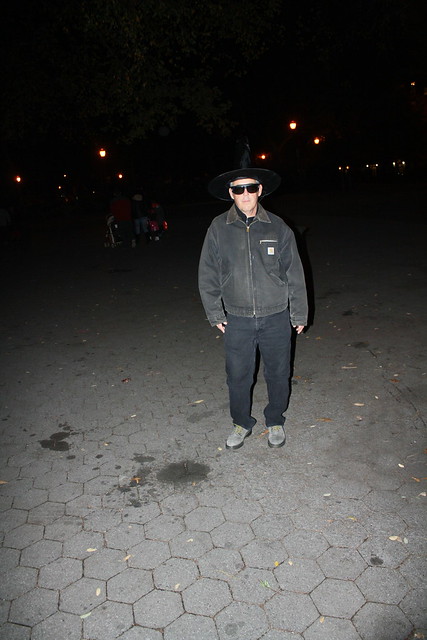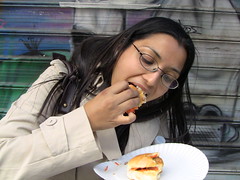 MJ Gonzalez Members of Jump on 3 mid-show on Friday Feb. 4 at Under St. Mark’s. (From left) Matt Dennie, Scot Holmes, Matt Starr, Maelle Doliveux, J.D. Amato, Phil Jackson.
MJ Gonzalez Members of Jump on 3 mid-show on Friday Feb. 4 at Under St. Mark’s. (From left) Matt Dennie, Scot Holmes, Matt Starr, Maelle Doliveux, J.D. Amato, Phil Jackson.What happens when you put a South African Wine importer, an advertising agent, an illustration student, a couple aspiring writers, and a government employee in a room, and yell the word “zipper” at them?
I don’t know. And they don’t know. We’ll have to all find out together. “That’s the beauty of improv,” says Matt Starr, 23, one of the seven members of the comedy improv group, Jump On Three. “Not only is the audience trying to figure everything out, but the improvisers are right there with you. You’re seeing everything unfold right before your eyes.”
Jump on 3 was created in March 2010, when a group of improvisers met at the Upright Citizen’s Brigade in Chelsea. After searching the city for a performance spot, they finally found what struck them as an ideal space at Under St. Mark’s, an underground theater at 94 St. Marks Place.
“At the time, there was kind of an indie team explosion,” says Jump on Three member Phil Jackson, 27. After seeing another independent group, Rogue Elephant, perform at Under St. Mark’s in October 2009. When he found out that Rogue Elephant would no longer be playing at that venue, Mr. Jackson jumped at the chance to snag the space. “It was the perfect storm of circumstances and opportunity,” he said.
Now, Mr. Jackson and his fellow improv members perform regularly at Under St. Mark’s, hosting a show on the first Friday of every month, performing with other groups that ask to play at the venue. “We used to have to beg other groups to perform with us when we were first starting out,” Jump on 3 member Scott Holmes said. “But now they’re begging us.” Read more…


























